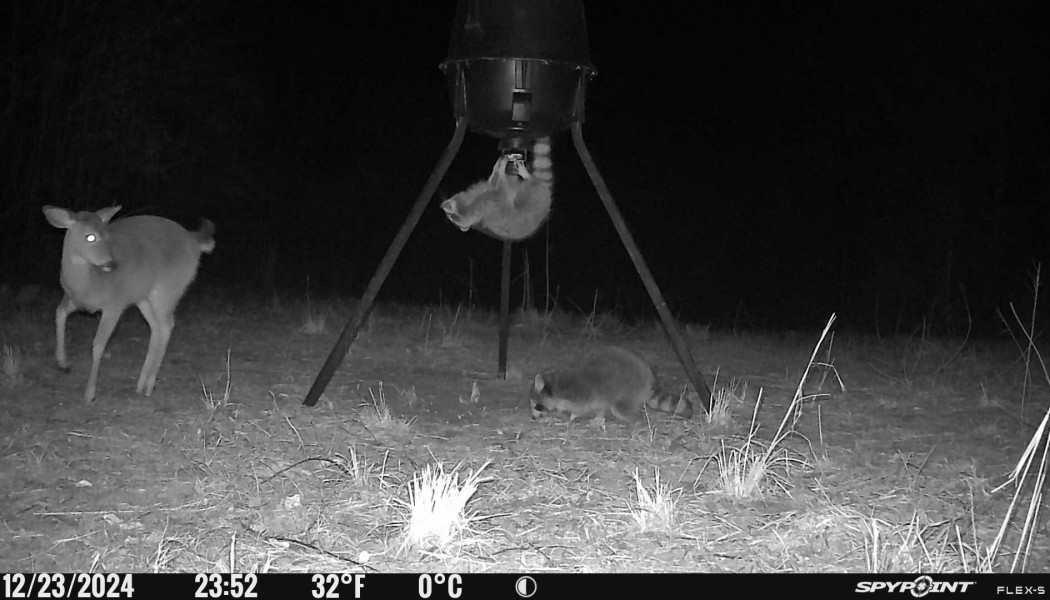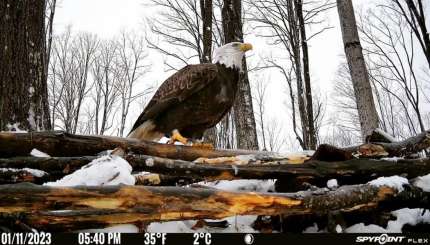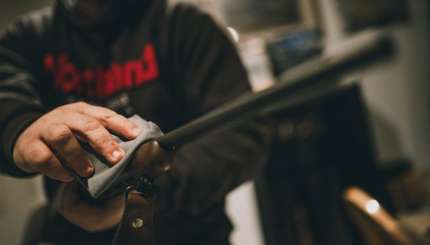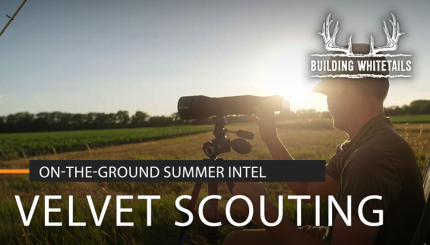
By Nate Skinner
Setting up a deer or bear feeder in an area that already sees plenty of activity from whitetails, bears, and other wildlife is a great way to draw game to a specific spot on your property. Pairing the feeder with a trail camera allows you to see exactly which animals are visiting, when they show up, and how often, giving you valuable insight for your hunts.
Trail cameras help hunters understand the patterns and movements of deer, other game, predators, and varmints around a feeder. For example, if a camera captures images of a mature buck on a regular basis, hunters can analyze the times of day the deer shows up and the conditions influencing its movements. Then, they can use this intel to develop a hunting plan for the area.
This is just one example of how trail cameras become valuable tools when placed near feeders. To maximize the amount of intel they provide, hunters must first understand the best way to set them up.

Know the Regulations First
Before setting up a feeder, it’s important to check local and state laws. In some areas, using feeders for hunting may be restricted, seasonal, or prohibited altogether. Regulations vary widely depending on the state and property type, so hunters should always confirm what’s legal in their area before putting out feed or monitoring it with trail cameras.

Pick the Right Spot
The first step in setup is picking the right spot. Trail cameras capture the best photos and videos when facing north or south, which prevents glare from the sun at sunrise and sunset.
Consider the Environment
It’s also important to consider the surroundings. On properties with livestock, for instance, hunters should make sure their camera won’t be tampered with before leaving it on a t-post or tree near a feeder. If cows are present, elevating the camera and angling it down may be the best option.
Dial in the Distance
Distance matters too. The sweet spot is usually 30 to 60 feet, though this varies depending on the setup and surroundings. A camera set farther back provides a wider field of view but risks missing activity if it’s too far away.
Fine-Tune the Settings
Because feeders often produce a high volume of images, adjusting camera settings can improve efficiency. A good starting point is medium trigger sensitivity and a motion delay of 30 seconds to one minute. From there, hunters can fine-tune settings based on how often the camera is triggered. In high-traffic areas, lowering sensitivity and increasing motion delay helps cut down on unnecessary images.

Sort Smarter with BUCK TRACKER™ AI
Sorting through piles of photos is another challenge with feeder setups. SPYPOINT cameras offer a unique solution for Insiders Club members: BUCK TRACKER™ AI. This feature allows hunters to quickly filter images by species, including buck, antlerless, boar, people, turkey, bear, coyote, and moose.
For example, selecting the “buck” filter will display only buck images. The “people” filter is also useful for checking when the feeder was last filled, without scrolling through hundreds of photos. Filters for predators like coyotes or hogs help hunters track their movements, while the antlerless filter makes it easy to monitor doe activity.Maximize Photos with Transmission Plans
Trail cameras at feeders often capture a high volume of images, especially during peak feeding times or when multiple animals are visiting. SPYPOINT transmission plans make it easy to manage this influx of data. Monthly or annual plans allow more images and videos to be sent directly for monitoring activity at feeders, ensuring important patterns aren’t missed.
Keep Cameras in the Field Longer
SPYPOINT cameras with solar panel capabilities and rechargeable lithium-ion batteries can remain in the field for extended periods without constant battery changes. Pairing solar panels with high-capacity rechargeable batteries allows cameras to stay in place longer, capturing consistent and reliable intel.
When used correctly, trail cameras are an essential tool for hunters managing feeders on their property. Getting them dialed in may take some trial and error, but the amount of valuable intel they provide is well worth the effort. Just make sure to start with a legal setup and then let your trail cameras do the work.




